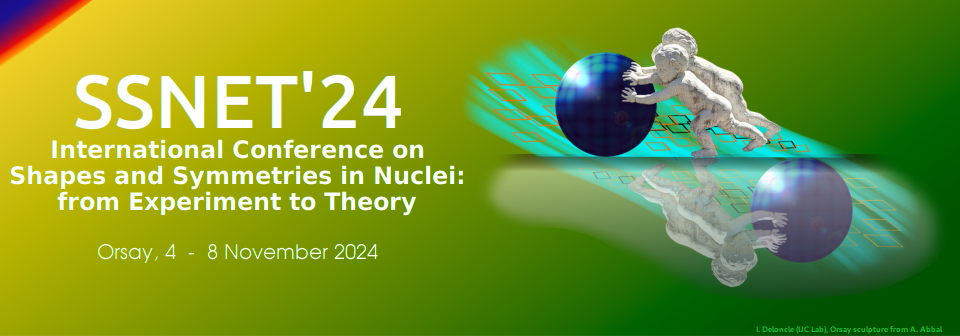Orateur
Description
The structure of the neutron-rich Zn isotopes was studied via beta-decay, Coulomb excitation, beam fragmentation and multi-nucleon transfer experiments. In most of the cases, states with spins below 6 ћ were populated except for 78Zn. The semi-magic nickel isotopes present a spherical ground-state structure. However, for N<40 Ni isotopes, low-lying 0+ states were understood as proton or neutron excitations across the Z=28 or N=40 gaps, respectively [1 and references therein]. In more neutron-rich Ni isotopes, in particular in 78Ni [2], low-lying excited structures are predicted to be based on deformed intruder configurations. The island of inversion at N=40 was known to extend up to Z=26 (Fe). Recent experimental work in 74Zn indicates that it extends further to larger atomic numbers [1].
Se isotopes around N=50 present axially deformed structures with gamma softness [3] whereas Ge isotopes are mainly triaxial. A Coulomb excitation study suggests even a rigid triaxial character in 76Ge [4]. Zn isotopes are therefore transitional nuclei between spherical and triaxial with configuration coexistence which complex structures deserve dedicated studies.
In the present work, even neutron-rich isotopes from N=43 to 49 were produced at GANIL in fusion-fission 238U on 9Be reactions. The light fragments were identified in mass and atomic number using the VAMOS++ spectrometer [5]. The emitted gamma-rays were detected in AGATA composed of 24 Ge capsules. In order to gain statistics, the array was placed closer to the target (13.3 cm) [6]. Fragment-gamma coincidences enable to firmly assign transitions to given isotopes. Fragment-gamma-gamma coincidences were observed enabling to complete level schemes of the even mass Zn fragments.
The experimental results are compared with the most advanced shell-model calculations using the most updated interaction for this region of the nuclear chart.
Both the experimental and theoretical information will be presented.
References:
[1] M. Rocchini et al., Phys. Rev. Lett. 130, 122502 (2023).
[2] R. Taniuchi et al., Nature (London) 569, 53 (2019).
[3] NNDC
[4] A. D. Ayangeakaa et al., Phys. Rev. Lett. 123, 102501 (2019).
[5] M. Rejmund et al., Nucl. Instrum. Meth. A 646, 184 (2011), M. Vandebrouck et al., Nucl. Instrum. Meth. A 812, 112 (2016)
[6] E. Clément et al.,Nucl. Instrum. Meth. A 855,1 (2017)

